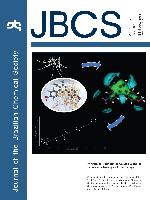
JOURNAL OF THE BRAZILIAN CHEMICAL SOCIETY
Scope & Guideline
Innovating Chemistry: Where Brazilian Research Meets Global Impact
Introduction
Aims and Scopes
- Analytical Chemistry:
The journal publishes studies that advance analytical methods and techniques, including the development of novel extraction methods, chromatography, and mass spectrometry applications for environmental, clinical, and food analysis. - Synthetic Chemistry:
Research on the synthesis of new compounds, including organic synthesis, medicinal chemistry, and the development of sustainable synthetic methodologies, is a major focus. - Environmental Chemistry:
Papers addressing the chemical aspects of environmental issues, including pollution analysis, remediation techniques, and the study of contaminants in various matrices, are frequently published. - Material Chemistry:
The journal features studies on the synthesis and characterization of new materials, including nanomaterials, polymers, and composites, with applications in catalysis, sensors, and biomedical fields. - Chemical Biology:
Research that bridges chemistry and biology, particularly studies on natural products, drug design, and bioactivity evaluations, is an important aspect of the journal's scope. - Green Chemistry:
The journal emphasizes sustainable practices in chemistry, focusing on eco-friendly synthesis, waste valorization, and the use of renewable resources in chemical processes.
Trending and Emerging
- Nanotechnology and Nanomaterials:
The journal has increasingly published articles on the synthesis, characterization, and application of nanomaterials, particularly in catalysis, drug delivery, and environmental remediation. - Biological Applications of Chemistry:
There is a notable rise in studies exploring the intersection of chemistry and biology, including drug discovery, pharmacology, and the bioactivity of natural products. - Sustainable Chemistry:
Research emphasizing green chemistry practices, including waste minimization, renewable resources, and eco-friendly synthesis methods, is gaining prominence as global sustainability goals become more critical. - Interdisciplinary Research:
The integration of different scientific disciplines, such as chemistry with data science, machine learning, and bioinformatics, is emerging as a significant trend, enhancing research capabilities and applications. - Environmental Monitoring and Remediation:
Studies focusing on the detection and remediation of environmental pollutants, particularly in water and soil, have become increasingly relevant, reflecting global concerns about environmental health.
Declining or Waning
- Classical Organic Synthesis:
Traditional organic synthesis methods, particularly those that do not incorporate green chemistry principles, have seen a decline as researchers increasingly focus on sustainable and efficient methods. - Basic Inorganic Chemistry:
Papers focusing solely on fundamental inorganic chemistry without applied aspects have become less prominent, possibly overshadowed by more application-driven research. - Agricultural Chemistry:
Research specifically dedicated to agricultural chemicals, such as traditional pesticide studies, has decreased as there is a shift towards biopesticides and environmentally friendly alternatives. - Theoretical Chemistry:
While theoretical studies remain important, papers focusing strictly on theoretical chemistry without experimental validation or application have seen a waning interest in favor of more integrative approaches.
Similar Journals
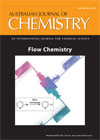
AUSTRALIAN JOURNAL OF CHEMISTRY
Advancing chemical knowledge, one article at a time.The Australian Journal of Chemistry, with an ISSN of 0004-9425 and an E-ISSN of 1445-0038, is a distinguished publication from CSIRO PUBLISHING, dedicated to advancing the field of chemistry since its inception in 1948. Based in Australia, this journal serves as a platform for original research articles, reviews, and innovative studies that encompass a wide spectrum of chemical disciplines, aiming to foster communication and collaboration among researchers globally. Despite its Q3 ranking in the Chemistry (Miscellaneous) category and standing at rank #236 in Scopus’ general chemistry classification, it remains an essential resource for professionals and students seeking to stay informed about emerging trends and discoveries in chemistry. The journal does not offer open access, emphasizing the premium quality of peer-reviewed content that adheres to rigorous academic standards. By bridging theory and practice, the Australian Journal of Chemistry continues to play a crucial role in shaping the future of chemical sciences.

Jordan Journal of Chemistry
Exploring Frontiers: A Platform for Chemistry Discovery and Dialogue.The Jordan Journal of Chemistry is a prominent publication dedicated to advancing the field of chemistry in Jordan and beyond. Published by the Yarmouk University Deanship of Research & Graduate Studies, this journal serves as a platform for researchers, educators, and practitioners to disseminate their findings in a variety of chemistry sub-disciplines. Although currently classified in Q4 of miscellaneous chemistry and ranking within the 9th percentile according to Scopus, the journal plays a crucial role in fostering academic dialogue and collaboration in the region. With its ISSN 1814-9111 and E-ISSN 2079-7249, the Jordan Journal of Chemistry offers open access to researchers from diverse backgrounds, ensuring that critical research is both accessible and impactful. By bridging local studies with global scientific advancements, this journal is poised to contribute significantly to the growth and recognition of chemistry as a key scientific discipline in the region, with convergence efforts set from 2020 to 2024.
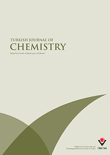
TURKISH JOURNAL OF CHEMISTRY
Unveiling New Frontiers in Chemical ResearchTURKISH JOURNAL OF CHEMISTRY, published by the Tubitak Scientific & Technological Research Council Turkey, serves as a significant platform for the dissemination of research in the diverse field of chemistry. Since its inception in 1996, this peer-reviewed journal has made substantial contributions to the body of knowledge within the field, currently holding a respectable Q3 ranking in the category of Chemistry (miscellaneous) as of 2023. Researchers and professionals alike rely on this journal for its wide-ranging discussions, innovative methodologies, and noteworthy findings pertinent to both fundamental and applied chemistry. With an ISSN of 1300-0527 and a commitment to promoting scientific progress, the journal is accessible to a global audience and encourages the open sharing of insights that drive advancements in chemistry. The extended timeframe of convergence until 2024 highlights the journal's dedication to fostering ongoing research and collaboration within the scientific community. As a valuable resource for researchers, professionals, and students, the Turkish Journal of Chemistry aims to inspire new discoveries and facilitate knowledge transfer in a dynamic and evolving discipline.

CHEMICAL JOURNAL OF CHINESE UNIVERSITIES-CHINESE
Advancing Chemistry Research, Bridging Ideas.CHEMICAL JOURNAL OF CHINESE UNIVERSITIES-CHINESE, published by Higher Education Press, serves as a vital platform for advancing research in the field of chemistry. With a history dating back to 1996, this journal has evolved to encompass a wide range of topics fundamental to the chemistry community, catering to both applied and theoretical perspectives. Although classified in Quartile 4 within the broader chemistry category, it remains a significant contributor to the knowledge base, ranking 281st out of 408 journals in the general chemistry category according to Scopus. Positioned in Beijing, China, the journal aims to foster collaboration among researchers and professionals while disseminating innovative research and developments. By promoting open exchange of ideas in chemistry, it strives to elevate the scholarly dialogue and contribute to ongoing education for students and professionals alike, with its content accessible through institutional subscriptions.

RUSSIAN JOURNAL OF GENERAL CHEMISTRY
Pioneering Research for Tomorrow's Chemical ChallengesThe Russian Journal of General Chemistry is a prominent scholarly publication dedicated to advancing the field of general chemistry. Published by MAIK NAUKA/INTERPERIODICA/SPRINGER, this journal contributes significantly to the global chemistry landscape, offering a platform for researchers and professionals to share their latest findings and methodologies. With an ISSN of 1070-3632 and an E-ISSN of 1608-3350, it has established itself as a resource for high-quality research articles since its inception in 1996. Though currently indexed in the Q4 category for chemistry (miscellaneous) and ranking #299 out of 408 in general chemistry according to Scopus, the journal remains an important venue for academic contributions that bridge gaps in traditional chemical disciplines. Desiring to cater to a diverse range of interests within chemistry, the journal actively encourages submissions that reflect significant scientific achievements, innovations, and collaborative studies. Although the journal does not currently offer open access, its role in disseminating crucial chemical research cannot be overstated. Researchers and students alike will find valuable insights and rigorous scientific discourse in its pages.
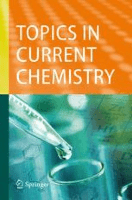
Topics in Current Chemistry
Unveiling the latest breakthroughs in chemistry.Topics in Current Chemistry is an esteemed peer-reviewed journal published by SPRINGER INT PUBL AG, renowned for its contributions to the field of chemistry. Established in 1974 and currently spanning its convergence through various years, this journal remains pivotal for researchers seeking to explore the latest developments in chemical sciences. With an impressive Q1 classification in the miscellaneous chemistry category and a Scopus rank placing it in the top 10% of its field, it serves as a crucial platform for disseminating high-quality research. The journal’s diverse scope covers a wide array of contemporary chemical topics, catering to a global audience of academic and professional chemists. Although not Open Access, its content can be accessed through institutional subscriptions, ensuring broad reach and engagement within the scientific community. Researchers and students alike will find Topics in Current Chemistry an invaluable resource for keeping abreast of cutting-edge advancements and trends in chemistry.

Revista Virtual de Quimica
Catalyzing Knowledge Exchange in the World of ChemistryRevista Virtual de Quimica, published by the SOC BRASILEIRA QUIMICA, is a dynamic online journal based in Brazil, dedicated to promoting innovative research in the field of chemistry and related disciplines. Established in 2011, the journal has made significant strides in contributing to the academic landscape, receiving an impact factor that highlights its relevance, although it currently holds a Q4 quartile ranking in the miscellaneous category of Chemistry and Mathematics as of 2023. The journal is committed to open access, ensuring that scholarly articles are readily available to researchers, professionals, and students worldwide. Its focus encompasses diverse areas within general chemistry, aiming to foster knowledge sharing and collaboration among the scientific community. By providing a platform for high-quality research publications, Revista Virtual de Quimica stands as an essential resource for advancing chemical sciences and encouraging interdisciplinary studies.
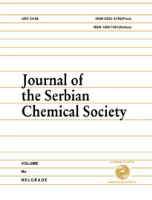
JOURNAL OF THE SERBIAN CHEMICAL SOCIETY
Pioneering Research, Bridging CommunitiesJOURNAL OF THE SERBIAN CHEMICAL SOCIETY, an esteemed publication in the field of chemistry, is published by the SERBIAN CHEMICAL SOCIETY and has been an essential platform for the dissemination of research since 1930. With an ISSN of 0352-5139, this Open Access journal is dedicated to fostering communication and collaboration among chemists worldwide, making its contents readily accessible to researchers, professionals, and students alike. Based in Serbia, the journal features a wide range of topics within the domain of general chemistry, as reflected in its Scopus rankings, which place it in the 34th percentile among its peers. The journal's engagement with the global scholarly community is further underscored by its consistent publication history since 1985, with coverage extending through to 2024. As the journal continues to evolve, it remains committed to promoting high-quality research and advancing the field of chemistry.

JOURNAL OF THE INDIAN CHEMICAL SOCIETY
Exploring the Frontiers of Chemistry with a Rich HeritageJournal of the Indian Chemical Society, published by Elsevier, stands as a cornerstone in the field of chemistry, particularly representing the rich chemical research emanating from India.
With a significant history dating back to its establishment, this journal encompasses diverse disciplines including Drug Discovery, Electrochemistry, Inorganic Chemistry, Organic Chemistry, and Physical and Theoretical Chemistry, reflecting the evolving landscape of chemical sciences.
Despite being positioned in the Q3 category across multiple quarters, the journal demonstrates promising rankings in various chemistries, highlighting its commitment to advancing the knowledge and application of chemical sciences. While currently not available as an open access journal, the Journal of the Indian Chemical Society is dedicated to providing a platform for high-quality research that fosters innovation and collaboration among researchers, professionals, and students worldwide.
With its continuous publication from 1973 to the present, it serves as an essential repository for cutting-edge findings and developments in chemistry, striving to connect academia with industry and practice.

REVUE ROUMAINE DE CHIMIE
Catalyzing Innovation in the Realm of ChemistryREVUE ROUMAINE DE CHIMIE is a distinguished academic journal in the field of chemistry, published by EDITURA ACAD ROMANE in Romania. With an ISSN of 0035-3930, this journal has been a valuable platform for disseminating original research and insights in the diverse realm of chemistry since its inception. The journal currently operates under a competitive tier, categorized in Q4 for miscellaneous chemistry fields, as reflected in its Scopus ranking of #348 out of 408, placing it within the 14th percentile. Aiming to foster scientific discourse and innovation, the REVUE ROUMAINE DE CHIMIE provides a repository of knowledge that is crucial for researchers, professionals, and students eager to advance their understanding and contribute to the global chemistry community. By bridging local and international research initiatives, this journal plays an essential role in enhancing the visibility of Romanian scientific contributions on the world stage.